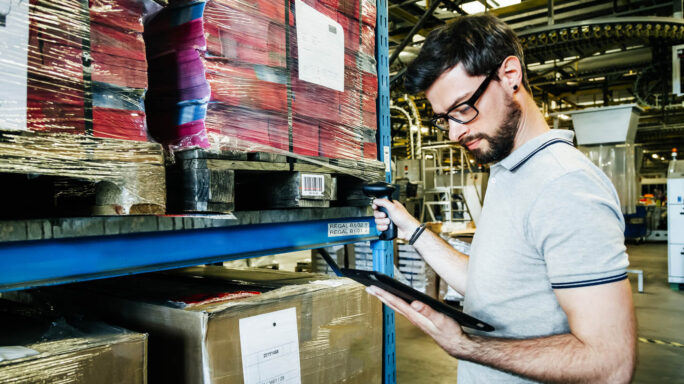Compliance
Best practices for a mock recall for your food business

Implementing a mock recall program for your food business should be a priority.
Recent cases of food recalls in Malaysia highlight why it’s so critical for your company to be prepared. When Malaysia Milk voluntarily recalled its Marigold HL Milk, the move helped the company avoid potential harm to its customers and avoid a PR disaster.
Manufacturers often underestimate the number of moving parts involved in a recall. A mock recall can help you:
- Test your traceability system by tracing a product’s journey within your supply chain
- Verify your communication systems (contact information of your recall personnel, suppliers, and consumers)
- Discover and modify aspects of the recall plan that prove challenging
Preparing for a mock recall
Certain structures must be in place to conduct a recall. The first is a traceability system. Recalls involve two phases:
- Identifying the item to be recalled
- Retrieving the product from the market
A successful recall relies on your ability to trace a product through your supply chain. An effective traceability system should identify the unit to be traced (a lot, batch or single product unit) and account for all transformations to the unit across the supply chain (mass balance).
The traceability system is perfected through separate traceability exercises. These are often confused with mock recalls. However, they are different activities. While a traceability exercise follows a food product or material through all stages of production, processing, and distribution, a mock recall is even more rigorous.
In addition to tracing the product, a mock recall tests your ability to remove the unsafe food from the market when it may have reached the consumer. This involves notifying the consumer, retrieving the affected product and deciding what to do with the product.
Establishing a recall team
A dedicated recall team is instrumental to the success of a food recall. The size of the recall team will vary according to company size and available resources. At a minimum, your recall team should include the following key personnel:
Recall coordinator – to oversee activities relating to the recall and manage other team members
Quality assurance specialist – to identify the root causes that led to the recall. This would help contain the scope of the recall by ensuring only affected products are recalled
Communications expert – to handle public relations (press releases and media statements)
Sales/Customer representatives – to communicate with consumers
Legal counsel – to advise on the legal requirements for a recall
It’s good practice to assign an assistant to the recall coordinator and designate substitutes for all team members. Since the decision to recall requires careful consideration, it’s beneficial to have an executive team. This team would have final authority to approve the recall.
Developing a recall plan
It’s important to create a recall plan that describes the procedures for performing a product recall. Your plan may include detailed procedures to:
- notify consignees
- notify the public when necessary,
- conduct effectiveness checks and
- appropriately dispose of the recalled product.
The Recall Team should design a suitable recall program that answers all regulatory questions and provides clear guidelines on how recalls will be conducted.
Perform a vulnerability audit
A vulnerability audit can help you identify possible safety issues that could lead to a recall. A list of possible crisis events, the likelihood of occurrence and potential damage to the company should be documented. This list will form the basis of your mock recall exercise.
Some questions to consider include:
- What are the ways your food might be compromised?
- In which areas is contamination likely to occur?
- What type of problems have your products already had in the market?
- What is the most serious problem that could occur?
Conducting a mock recall
The first step is to choose the product to recall. This should be an item that poses significant risk identified during the vulnerability audit. It’s important to be realistic and choose scenarios most likely to happen.
Once you select the product to be recalled, the recall team should decide when to conduct the recall. It’s good practice to make this date a surprise to simulate an actual recall as closely as possible. Getting staff and management to commit to the exercise is crucial for success. If the mock recall is not taken seriously, the entire exercise may be futile.
It’s important all the steps followed during a mock recall are properly documented. This includes deviations from the actual recall plan, problems encountered and other pertinent details.
Assess the effectiveness of the mock recall
You should always determine the effectiveness of mock recall exercises you conduct. The effectiveness of the recall is measured by how much of the contaminated product is recovered within a given time frame. If less than 100 percent effectiveness is achieved, you should consider repeating the mock recall.
Key questions to ask after the recall include:
- Was the recall team able to convene quickly and reach a decision regarding the recall?
- Was the contact information of all stakeholders (recall team members, suppliers, retailers, consumers) available and up-to-date?
- How difficult was it to:
- Trace the recalled product?
- Gather the information necessary to activate the recall?
- Contact regulatory agencies?
- Prepare documents for media correspondence (press releases and media statements)?
- Maintain a log of activities?
Based on insights from the mock recall, the recall plan should be modified to better reflect the actual steps employed or include details that may have been overlooked.
Standardising the mock recall process
The frequency of mock recalls depends on specific company needs. The rule of thumb is to perform enough mock recalls to perfect your recall plan. Once a tested plan is in place, you can settle for a frequency that works for you. As a rough guide, a yearly mock recall is recommended for small firms to assess the thoroughness of their recall plans. Quarterly recalls can be performed by larger firms with greater resources.
How long should the mock recall last?
Similar to actual recalls, there is no set time for a mock recall. It’s advised to set a 24-hour time limit for alerting appropriate authorities once a safety breach has been confirmed. Some companies place a 2-hour limit on the traceability exercise for an affected product but the time for product recovery is usually more flexible.
Wrapping up
Conducting mock recalls makes you more confident about your recall procedures and prepares your company for a crisis. Your preparedness for a food recall can be the difference between a contained incident and a full-blown crisis. By taking mock recalls seriously and incorporating them into preventive measures, manufacturers not only stay on the good side of the law but also avoid the chaos so often part of a food recall.






